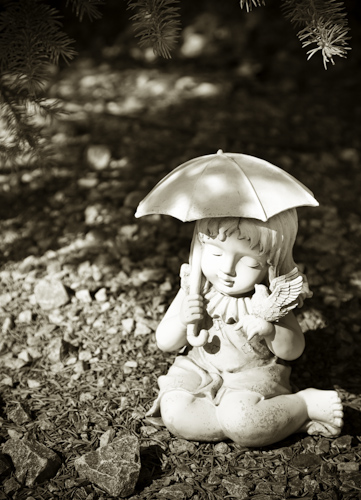“Field of Depth” – we caught your eye didn’t we? Of course it isn’t “Field of Depth“, but we knew you couldn’t resist peeking into our article and poking at our mistakes 😛
“Field of Depth“, or more commonly referred to as “Depth of Field” or DoF, is the distance within the photo that is in focus. A narrow depth of field will have, for instance, one foot of the image in focus, while a large depth of field could be 10 or more feet in focus. These numbers aren’t specific or anything, just an example.
Field of Depth: In optics, particularly as it relates to film and photography, the depth of field (DOF) is the portion of a scene that appears acceptably sharp in the image. Although a lens can precisely focus at only one distance, the decrease in sharpness is gradual on each side of the focused distance, so that within the DOF, the unsharpness is imperceptible under normal viewing conditions. – Wiki
When to use a shallow depth of field?
- Portrait Photography
- Product Photography
- Event Photography
- Sport Photography
- Macro Photography
When to use a larger depth of field?
- Whenever you are not doing any of the above actions.
- Landscape Photography
This is of course just a general guide line, there are always instances when you want a deeper depth of field for any sort of photography, or vice versa.
So, how do we adjust our depth of field?
- Change Lens
- Adjust Aperture

Changing your lens can have a huge impact on your DoF. For example, a 50mm lens will have a greater depth of field compared to a 500mm lens, even when set to the same aperture. Using a larger lens and using a fairly shallow depth of field is often useful when shooting models (keeps them more comfortable) and shooting sporting events (spectators are not going to be distracting from your main subject).
Macro lenses on the other hand will have an extremely small depth of field, sometimes only a few mm wide!

If you are still holding back on your manual mode, or aperture priority, there is often a preset function with a small face. Rotating your dial (on Canon or Nikon), or adjust your camera setting however, will make it use the pre-programmed portrait mode which will set your camera up with a greater aperture. Aperture is one of the key players in the game of depth of field (Read more on aperture and aperture priority here). The run down is this – a larger aperture “ex: f 2.8” will have a much more shallow DOF compared to an aperture of “f 32”
For other good sources on DOF, feel free to check out DPS, CiC. For a good DOF calculator, visit here. Also be sure to download PhotoCalc for your iTouch or iPhone! You can quickly and easily calculate your depth of field without carrying around bulky depth of field charts.
Hopefully our “field of depth” *cough!* “depth of field” article helps clear a little confusion!